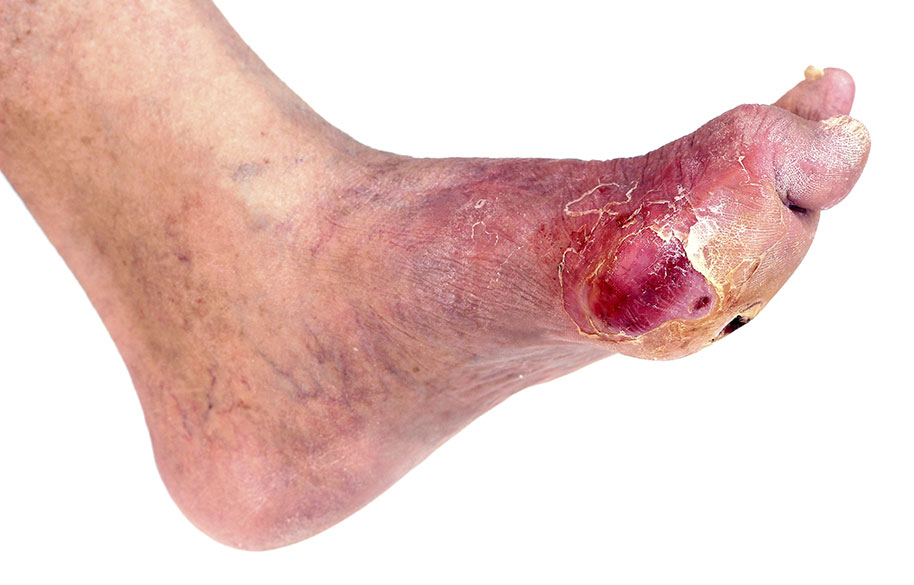It is estimated that 85 amputations are caused by diabetes every week in Australia.
Up to 85 percent of diabetic foot complications can be prevented with education and awareness of diabetes foot care.
Looking after your feet can prevent
further problems and serious complications
even amputation
Australia has the second highest rate of diabetes related amputations in the developed world.
When you have diabetes or vascular problems you need to care for your feet every day.

A high risk foot is one that is vulnerable to amputation. People with high risk feet usually have less sensation due to poor blood flow or nerve damage; meaning that feet may feel numb, cold or both. This is often the result of diabetes or vascular disease. Due to the lack of sensation you may not notice things like a stone in your shoe, or if your shoe is not fitting correctly. Blisters or skin damage can go unnoticed. For this reason it is important to check your feet every day, and report any new problems immediately. People with high risk feet have usually experienced an ulcer, infection, or have possibly already experienced an amputation.
Diabetic foot ulcers are sores that occur on the feet of people with Type 1 and Type 2 Diabetes that fail to heal in a timely manner. Diabetic foot ulcers often occur on the bottom of the foot. They require immediate treatment.
A callus is an area of hard, thickened skin on foot that has formed in response to pressure or friction. Ulcers can form under callus.
A claw toe is a toe that is bent at the middle and or end joints in the toe, and can lead to severe pressure and pain; particularly if wearing poorly fitted shoes.
Is the permanent surgical removal of a body part.

People with high risk feet should have regular check-ups. If you have high risk feet you should have them checked by your doctor or podiatrist every 3 to 6 months.

Aboriginal and Torres Strait Islanders suffer the greatest risk of amputation as a direct complication of diabetes. Major amputations are 38 times more likely in Aboriginal people that non-Aboriginal people (aged 25 – 49).
If you are working in remote healthcare and would like access to Care 4 Feet information please email info@care4feet.org.au or telephone toll free 1300 782 231.
A low risk foot can be described as a foot which has normal feeling and sensation, for example; you would be aware if you had a stone in your shoe, and no history of foot ulcers or amputations. Low risk feet have a healthy skin colour and are normal in temperature. If you want to know more about your foot health visit your doctor or podiatrist.
Toe the line for healthy feet
It’s time to stand up to the
statistics. 85 percent of
diabetes related amputations
are preventable.
The Care 4 Feet campaign is a call to action from Limbs 4 Life to encourage Australians to take care of their feet, reduce foot related complications, visit regularly with a podiatrist and prevent amputation.
When you have diabetes or vascular problems you need to care for your feet every day.
If you are a service provider contact us to order free information cards and awareness posters for your facility.
The following Care 4 Feet information cards have been created to help with quick tips and vital facts to ensure healthy feet.
- click to download in pdf format -
Help us spread the word.
If you or someone you know
is at risk we can help
Information contained on this website is intended to present useful
and accurate information of a general nature but is not intended
to be a substitute for medical advice.
© 2023 All Rights Reserved